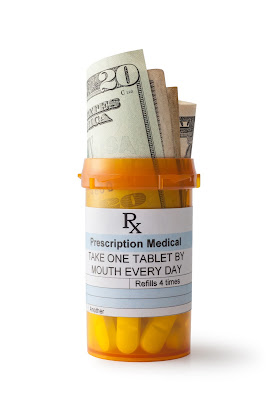The 2016 Final Rule expanded our definition of “states, allowing the five US territories to join the MDRP. John Shakow’s stimulating presentation at the Medicaid Drug Rebate Program summit 2016, on September 21, dealt with this component of the Final Rule, and identified several areas for concern, and evaluations that manufacturers need to do prior to the April 1, 2017 day of decision.
• May waive participation
• Utilization - Subject to Medicaid rebates
• Transactions - Eligible for inclusion in AMP and BP calculations
** Manufacturers must include transactions regardless of waiver status**
WA 1.8 million
Puerto Rico has a $72 billion debt crisis. All public obligations are threatened with default.
Congress passes law in June 2016 to address this, called PROMESA (Puerto Rico Oversight, Management and Economic Stability Act). PROMESA (committee of 7) has the power to set fiscal policy, including waivers and Medicaid payments, and to cancel contracts.
Gubernatorial election is set for November 8. Current governor is not running, and neither candidate for office has taken a position on the waiver. The lame duck period runs into January 2017.
ASES - Puerto Rican Health Insurance Administration (Administracion de Seguros Salud de Puerto Rico) – responsible for Medicaid.
PSG - The Government Health Plan (Plan de Salud de Gobierno) - Puerto Rico’s Medicaid program
Abarca Health - The PBM that maintains, among other things, the prescription drug list and pharmacy benefit for PSG.
DACO - Puerto Rican Department of Consumer Affairs (Departamento de Asuntos del Consumidor de Puerto Rico) has price control authority over wholesalers and pharmacies (Regulation 3707).
Manufacturers contract with Abarca Health for PDL access, and pay rebates for inclusion.
Many contracts expire December 31, 2016, but can be automatically renewed.
John Shakow has seen Abarca contracts with “Best Price rip cord clauses” and “termination provisions.”
Targeted drugs
• High volume drugs
• Chronic disease drugs
• Drugs used by elderly or infants
• Currently 75 drugs (innovator and generic)
• List can be changed
Pharmacies must maintain public price lists
• The decision to participate in MDRP lies with AES leaders (appointed by governor)
• Decision in January, AFTER new governor is sworn in
• Abarca rebates – Will they be higher or lower than the MDRP URAs?
• If lower, will AES set up supplemental rebates to compensate?
• Waiver executed – Abarca rebates remain
• No waiver
All of this is up in the air. So many variables or outcomes make planning difficult, but mandatory. Manufacturers need to look at commercial pricing concessions for best price impact, and model potential liabilities for either scenario.
One more thought. After considering John’s presentation, it could be déjà vu. If manufacturers decide that doing business in Puerto Rico is no longer in their financial best interest, or offering rebates to these purchasers is no longer attractive, they may refuse to sell there. The CMS FAQ36 answer to this requirement to sell to the Territories was “The final rule does not require that a drug manufacturer sell its drugs to certain purchasers.” If enough manufactures apply this tactic to a territory with such a large vulnerable population, will we see another version of the Veteran’s Health Care Act of 1992?
 John Bliss is a contributing writer for the Medicaid Drug Rebate Program Summit. He has extensive experience in the pharmaceutical industry, including AstraZeneca, Sanofi Aventis, Merck, Pfizer, Daiichi Sankyo, and Bristol-Myers Squibb (BMS). The bulk of John’s career was at BMS. When OBRA90 hit, Government Pricing took over his life. Government pricing, managed care contracting, rebates, and chargebacks continue to extend challenges and provide meaningful employment. John now works as a consultant, primarily subcontracted by other consulting firms, providing value added services to each of them and their clients.
John Bliss is a contributing writer for the Medicaid Drug Rebate Program Summit. He has extensive experience in the pharmaceutical industry, including AstraZeneca, Sanofi Aventis, Merck, Pfizer, Daiichi Sankyo, and Bristol-Myers Squibb (BMS). The bulk of John’s career was at BMS. When OBRA90 hit, Government Pricing took over his life. Government pricing, managed care contracting, rebates, and chargebacks continue to extend challenges and provide meaningful employment. John now works as a consultant, primarily subcontracted by other consulting firms, providing value added services to each of them and their clients.
Expansion
Territories:
• May join MDRP• May waive participation
Drug Activity:
• Utilization - Subject to Medicaid rebates
• Transactions - Eligible for inclusion in AMP and BP calculations
** Manufacturers must include transactions regardless of waiver status**
Demographics
Puerto Rico is the largest of the territories, with 3.5 million people. The other four territories total 348 thousand, less than 10% of Puerto Rico’s population.Economics
Puerto Rico is very poor, and almost half are enrolled in Managed Medicaid (1.67 million). Comparable state Medicaid enrollments:WA 1.8 million
- AZ 1.8 million
- NJ 1.7 million
- TN 1.5 million
Puerto Rico has a $72 billion debt crisis. All public obligations are threatened with default.
Congress passes law in June 2016 to address this, called PROMESA (Puerto Rico Oversight, Management and Economic Stability Act). PROMESA (committee of 7) has the power to set fiscal policy, including waivers and Medicaid payments, and to cancel contracts.
Politics
Gubernatorial election is set for November 8. Current governor is not running, and neither candidate for office has taken a position on the waiver. The lame duck period runs into January 2017.
Applicable Medicaid Organizations
ASES - Puerto Rican Health Insurance Administration (Administracion de Seguros Salud de Puerto Rico) – responsible for Medicaid.
PSG - The Government Health Plan (Plan de Salud de Gobierno) - Puerto Rico’s Medicaid program
Abarca Health - The PBM that maintains, among other things, the prescription drug list and pharmacy benefit for PSG.
DACO - Puerto Rican Department of Consumer Affairs (Departamento de Asuntos del Consumidor de Puerto Rico) has price control authority over wholesalers and pharmacies (Regulation 3707).
Medicaid in Puerto Rico
Manufacturers contract with Abarca Health for PDL access, and pay rebates for inclusion.
Many contracts expire December 31, 2016, but can be automatically renewed.
John Shakow has seen Abarca contracts with “Best Price rip cord clauses” and “termination provisions.”
Price Controls - DRACO
Targeted drugs
• High volume drugs
• Chronic disease drugs
• Drugs used by elderly or infants
• Currently 75 drugs (innovator and generic)
• List can be changed
Pharmacies must maintain public price lists
Waiver Decision
• The decision to participate in MDRP lies with AES leaders (appointed by governor)
• Decision in January, AFTER new governor is sworn in
Considerations in Decision
• Abarca rebates – Will they be higher or lower than the MDRP URAs?
• If lower, will AES set up supplemental rebates to compensate?
Implications for Manufacturers
• Waiver executed – Abarca rebates remain
• No waiver
- URAs due on every unit reimbursed under PSG, possibly exceeding Abarca amounts
- May join consortium of states to obtain supplemental rebates
All of this is up in the air. So many variables or outcomes make planning difficult, but mandatory. Manufacturers need to look at commercial pricing concessions for best price impact, and model potential liabilities for either scenario.
One more thought. After considering John’s presentation, it could be déjà vu. If manufacturers decide that doing business in Puerto Rico is no longer in their financial best interest, or offering rebates to these purchasers is no longer attractive, they may refuse to sell there. The CMS FAQ36 answer to this requirement to sell to the Territories was “The final rule does not require that a drug manufacturer sell its drugs to certain purchasers.” If enough manufactures apply this tactic to a territory with such a large vulnerable population, will we see another version of the Veteran’s Health Care Act of 1992?
 John Bliss is a contributing writer for the Medicaid Drug Rebate Program Summit. He has extensive experience in the pharmaceutical industry, including AstraZeneca, Sanofi Aventis, Merck, Pfizer, Daiichi Sankyo, and Bristol-Myers Squibb (BMS). The bulk of John’s career was at BMS. When OBRA90 hit, Government Pricing took over his life. Government pricing, managed care contracting, rebates, and chargebacks continue to extend challenges and provide meaningful employment. John now works as a consultant, primarily subcontracted by other consulting firms, providing value added services to each of them and their clients.
John Bliss is a contributing writer for the Medicaid Drug Rebate Program Summit. He has extensive experience in the pharmaceutical industry, including AstraZeneca, Sanofi Aventis, Merck, Pfizer, Daiichi Sankyo, and Bristol-Myers Squibb (BMS). The bulk of John’s career was at BMS. When OBRA90 hit, Government Pricing took over his life. Government pricing, managed care contracting, rebates, and chargebacks continue to extend challenges and provide meaningful employment. John now works as a consultant, primarily subcontracted by other consulting firms, providing value added services to each of them and their clients.






